
Dystrophic changes in intervertebral discs are called osteochondrosis. This problem can occur in a person at any age; dysfunction of the intervertebral discs leads to a number of serious, simultaneous problems. How to prevent the development of cervical osteochondrosis? What medications and alternative therapies are used in the treatment?
Cervical osteochondrosis - what is it
The cervical spine consists of 7 vertebrae and 8 pairs of nerve nodules. Osteochondrosis of the cervical spine develops against the background of degeneration of the intervertebral mass into vitreous tissue. In this case, the abnormal changes affect the end of the nerve fibers and the important blood vessels. Most often, the pathology affects the 7th and 8th vertebrae.
The disease is carefully disguised as other pathologies that manifest as attacks of headaches and neck discomfort. Patients may complain of dizziness, nausea, and pressure problems. The disease is most often confused with heart and blood vessel problems.
Important! Often, in the background of problems with the vertebrae, a person suddenly loses consciousness, feels short of air, and the tongue may numb.
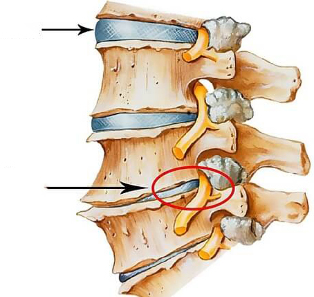
Osteochondrosis of the cervix is most commonly diagnosed in people over the age of 30, caused by the characteristics of the location of the human skeleton, constant statistical and dynamic loads. The disease is growing rapidly, recently osteochondrosis has occurred even in adolescents.
Causes of the disease
The development of osteochondrosis is influenced by physiological and pathological processes. They are closely related, they are always looked at together in medical practice.
Physiological changes in the cartilage of the spine are caused by irreversible age-related processes. These are located in the central part of the intervertebral disc and are manifested by fibrous tissue as a constriction of the pulp. The discomfort occurs during irritation of the nerve endings.
Abnormal lesions - in this case, the area of inflammation extends beyond the cartilage tissue, causing severe irritation of nerve endings and constriction of blood vessels. They occur in the background of poor nutrition, sedentary lifestyle, in adolescents and middle-aged people.
Important! In rare cases, osteochondrosis of the cervical spine may disappear on its own or manifest itself in the form of short-term episodes. The human body has a number of compensatory and protective functions that can neutralize pathological changes in cartilage for some time.
Provocative factors:
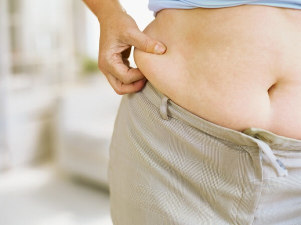
- sedentary work, lack of regular physical activity;
- frequent uncomfortable stay in an uncomfortable situation;
- overweight;
- nervous overload, stressful conditions;
- neck and neck injuries;
- hypothermia.
Osteochondrosis can be caused by a congenital disorder, an autoimmune disease.
Key Features
Cervical osteochondrosis does not always present in pain in a specific part of the spine, often the clinical picture of the disease is blurred.
The main symptoms are dizziness, migraine, sudden changes in blood pressure.
If you need urgent hospital treatment:
- numbness, loss of mobility of the muscles of the face or shoulder girdle;
- increasing headache, usually accompanied by deterioration in well-being;
- lack of coordination;
- loss of consciousness.
Cervical spine pain often radiates to the shoulder girdle and upper limbs. Its distinguishing feature is that the pain syndrome is paroxysmal, most commonly after awakening, sudden movements, laughter, coughing, and sneezing.
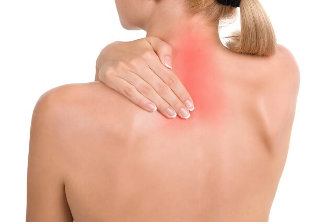
When osteochondrosis is in its early stages, the pain subsides quickly, it is almost always accompanied by a crack in the neck, the muscles weaken, the skin loses its sensitivity.
Important! In the case of abnormalities in the 6th vertebra, pain syndrome is observed in the thumb, and in the case of damage to the 7th vertebra, it affects the middle finger.
Women develop symptoms of osteochondrosis of the neck later than men - the average age is 50-55 years.
How osteochondrosis is linked to other diseases
Cervical osteochondrosis and blood pressure - the link between these pathologies has long been established. In the case of osteochondrosis, a sharp drop in pressure during the day is typical, persistent high blood pressure is not typical of this disease.
In osteochondrosis, increased pressure is associated with migraine, head noise, arms, legs, and chest pain. At the same time, the sensitivity of the skin in the area of the collar is noticeably reduced, stress can cause pressure jumps and prolonged discomfort.
Cervical osteochondrosis and dizziness - severe pain syndrome, cerebrovascular accident and transmission of nerve signals, underlies the problems with the vestibular device.
In osteochondrosis, non-systemic dizziness is most common - there is no feeling of rotating objects, but a person is very sick, having difficulty standing up straight.
Important! With frequent seizures of dizziness, not only a neuropathologist but also an ENT should be visited to rule out the presence of pathological changes in the nasopharynx.
Headache accompanies osteochondrosis in almost 90% of cases. It occurs in the background of vasospasm, tightening of nerve endings, increased intracranial pressure. It appears in different ways - pulsating, boring.
In osteochondrosis, a headache attack is similar to the feelings of high blood pressure, angina pectoris, heart attack, stroke.
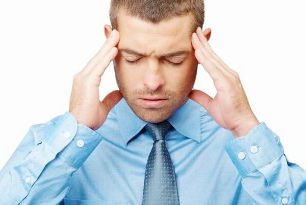
Panic attacks occur in osteochondrosis in the background of cerebral circulatory disorders. At the same time, one experiences unreasonable fear, physical discomfort. The duration of the attack is between 2-3 minutes and an hour, they can be repeated several times a day. Panic attacks are accompanied by heavy headaches, incessant tears, apathy and lethargy. You should take sedatives with severe seizures, and you should see a psychiatrist regularly.
Fears and depression, in addition to osteochondrosis, are the cause of constant pain and forced lifestyle changes.
Diagnostic Methods
People with osteochondrosis may experience pain in the back of the head, chest, arms - such a blurred image of the disease makes the initial diagnosis significantly more difficult.
prevents timely diagnosis of people and uncontrolled administration of analgesics. A person feels healthy without pain. He turns to a doctor late when irreversible processes develop in the tissues of the neck joints.
Important! Only one neurologist deals with the treatment of osteochondrosis.
The purpose of the external examination is to identify neck mobility and pain. The doctor then prescribes an X-ray of several projections and computed tomography. If hernia is suspected, magnetic resonance imaging should be performed. Doppler ultrasound is used to assess the condition of the arteries and blood vessels.
Principles of Medication
The goal of medication is to eliminate pain, inflammation, normal mobility, and restore blood circulation.
Main groups of medicines:
- painkillers are available in tablet and injection form to eliminate pain syndrome;
- non-steroidal and steroidal anti-inflammatory drugs;
- chondroprotectors help to repair cartilage tissue;
- muscle relaxants relax muscles, are used as an excipient to relieve pain - they contain glycerin, benzimidazole, a large list of contraindications;
- vitamin complexes - must contain all vitamins of groups B, D, E, retinol, ascorbic acid;
- artificial analogues of histamine - help eliminate problems with the vestibular device;
- means for external use in the form of gels, ointments - it helps to improve blood circulation, relieves cramps and pain, warms, relieves pain.
Important! The vitamins in food are not enough to treat osteochondrosis.
In cervical osteochondrosis, drugs that improve cerebral circulation are mandatory elements of therapy, dilating blood vessels, improving blood flow. Nootropic drugs that improve the metabolic processes in the brain restore memory and thinking.
Surgery for osteochondrosis is rarely used. Surgery is essential for upper limb paralysis, acute circulatory disorders and cerebral edema.
Additional treatments include massage, push and pull hand therapy, metered traction, relaxation techniques and acupuncture.
How to treat osteochondrosis at home
Home treatment involves the regular performance of special exercises, the use of special orthopedic devices. Recipes from traditional medicine can be used as supportive therapy.
The Shants collar is used to eliminate spinal tension, reduce stress and strengthen the neck muscles. The head and neck are fixed in the proper position, which allows you to get rid of insomnia, preventing the progression of pathological changes. You should not wear a collar all day, but 2-3 hours before bedtime.
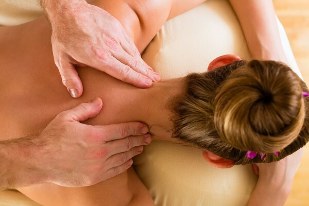
self-massage helps to relieve pain and cramps while rubbing blood flow with ointments. The procedure should be performed while sitting, the posture is comfortable and relaxed. Caressing, circular rubbing should be done, touching not only the neck but also the shoulder girdle.
Important! In the case of cervical osteochondrosis, any heating is prohibited, except for the bath and sauna.
Spas relieve pain and inflammation well, allowing the spine to relax. Water procedures should be performed every other day, the course consists of 15-20 procedures.
Bath recipes:
- Mix 150 g of chamomile and mint and boil 5 liters of boiling water. Leave the infusion for 2 hours, filter.
- Take 20 g of mint, lemongrass and birch leaves. The collection is boiled in 6 liters of boiling water and filtered after 2 hours.
- 300 g of herb and 5 liters of boiling water are needed to prepare the sage infusion. The healing solution is ready within 2 hours.
You can prepare an infusion of yarrow for oral administration - this will help to quickly eliminate inflammation, cramps and pain. Boil 230 ml of boiling water from 6 g of grass, leave for one hour in a closed container. Take 15 ml three times a day.
A solution of 15 g of sea salt and 1 liter of water will help you cope with osteochondrosis. Bring the mixture to the boil, cool completely. Moisten the natural tissue in the composition, apply to the back of the neck.
Possible complications
With timely diagnosis and proper treatment, cervical osteochondrosis progresses without any particular complications. Otherwise, severe pathological changes will develop that can cause disability.
Why is osteochondrosis of the neck dangerous?
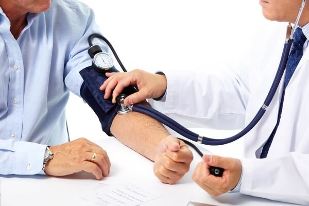
- vertebral artery syndrome - functional and organic changes caused by damaged blood circulation in the brain;
- hypertension, arrhythmia;
- numbness, weakness, muscle atrophy of the upper limbs;
- protrusion, hernia;
- VSD;
- neurological disorders.
Physiotherapy practices for osteochondrosis
Practical therapy of osteochondrosis of the cervical spine can restore the nutrition of damaged tissues, restore blood circulation.
It is forbidden to turn the head strongly or bend sharply during the physiotherapy. Only imitations of such movements are allowed. You can do a series of exercises for up to 2 minutes - prolonged exercise can lead to a complication of osteochondrosis.
An effective set of exercises for cervical osteochondrosis was developed by Shishonin. The principle is that all movements should be performed smoothly, each position should be recorded for 15-30 seconds. There should be no painful feelings during the gymnastics, each exercise should be repeated 5 times.
Description of exercises:
- Sit up straight, tilt your head to the right. When the muscle tension appears, record the position. Make 5 slopes on each side.
- The head is bent back and forth in a manner analogous to the previous exercise.
- Stretch your chin alternately to your left and right shoulders. The back is straight, cannot be rounded.
- Turns the head left and right, delayed for 30 seconds in both positions.
- Continue side turns, but use additional levers. Turning to the right with the right hand on the left shoulder and vice versa.
- Close your palms, raise your arms above your head, turn to the side.
- Straighten your arms, move them to the side and back slightly, stretching your chin forward.
Preventive measures
Preventing osteochondrosis consists of simple steps that, if done regularly, can prevent serious health problems. Prevention is especially needed for the elderly and those who spend a lot of time sitting.
Prevention of osteochondrosis:

- take a hot shower every day for at least 10 minutes;
- visit the bath, sauna regularly to eliminate cramps and neck tightness;
- sleep on an orthopedic pillow and a special mattress;
- Perform a small five-minute warm-up while sitting.
The best sport to prevent osteochondrosis is swimming, yoga, aerobic exercises, special exercises to strengthen the neck muscles.
Vulnerable people are not allowed to run, jump or build. The critical weight is 10 kg, the weights must be carried with both hands. You can also use a corset to protect your spine.
Sergei Bubnovsky describes the prevention of osteochondrosis well. In your book, you can learn which back pains are dangerous, how to restore health without injections and corsets, and find a range of special exercises.
Osteochondrosis of the neck is a disease that can affect everyone. Timely diagnosis and prevention, a healthy and active lifestyle will help prevent the development of severe pathological changes in the spine, provide good health and excellent mood.


















































